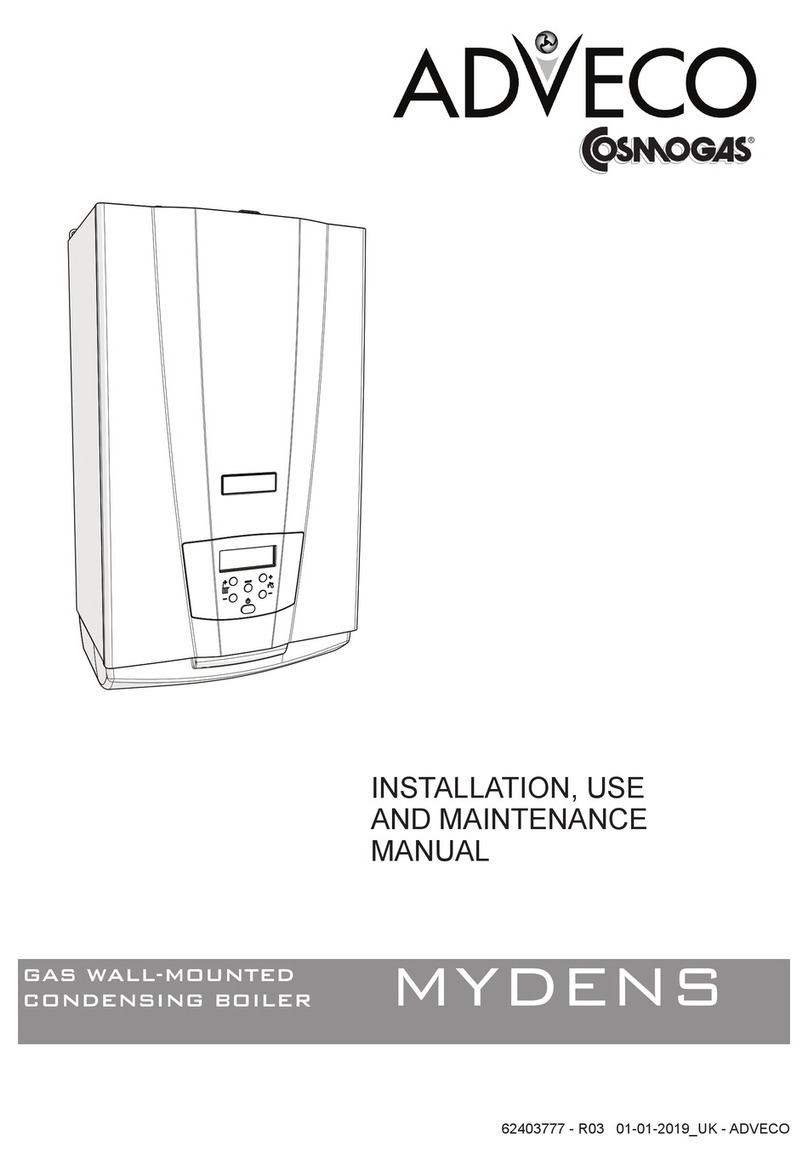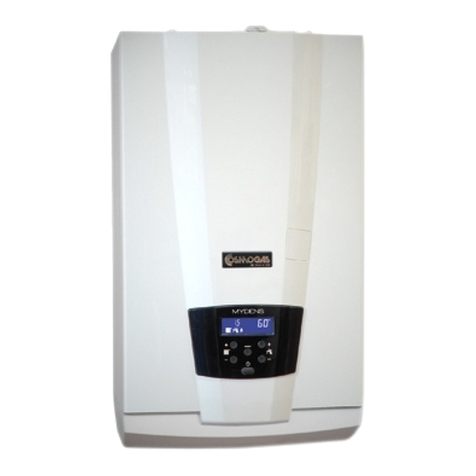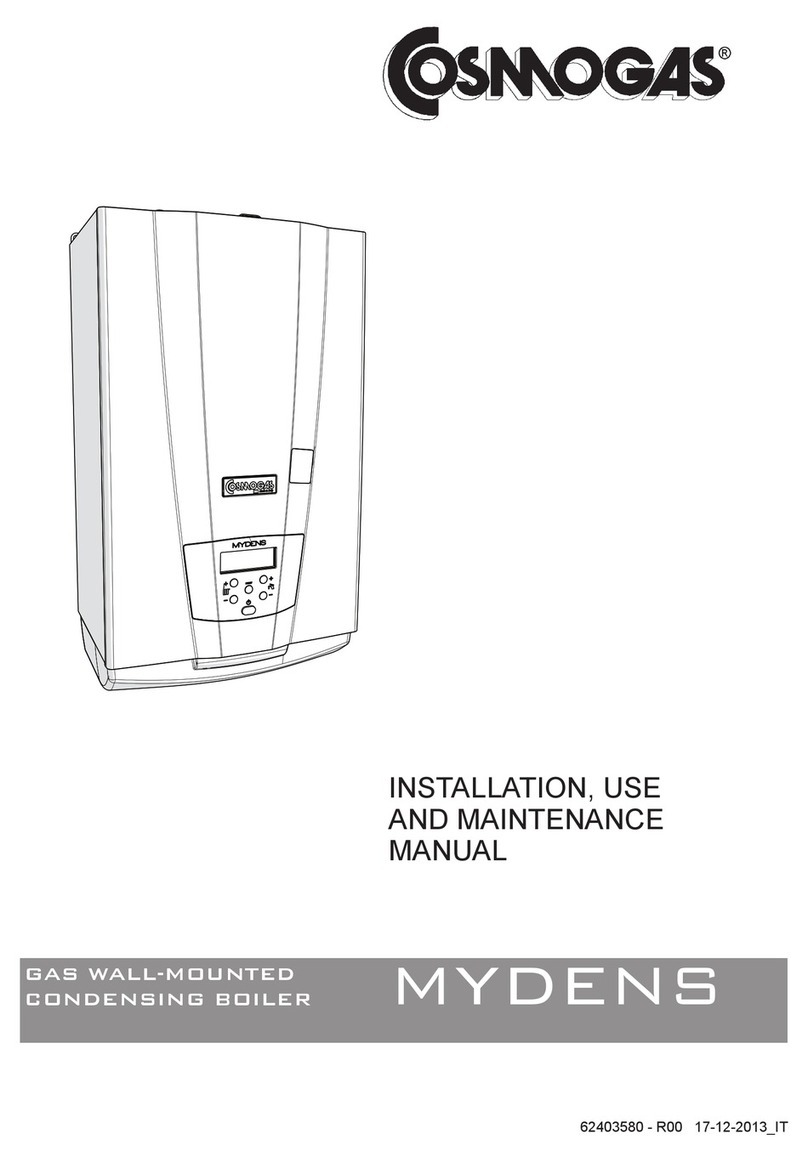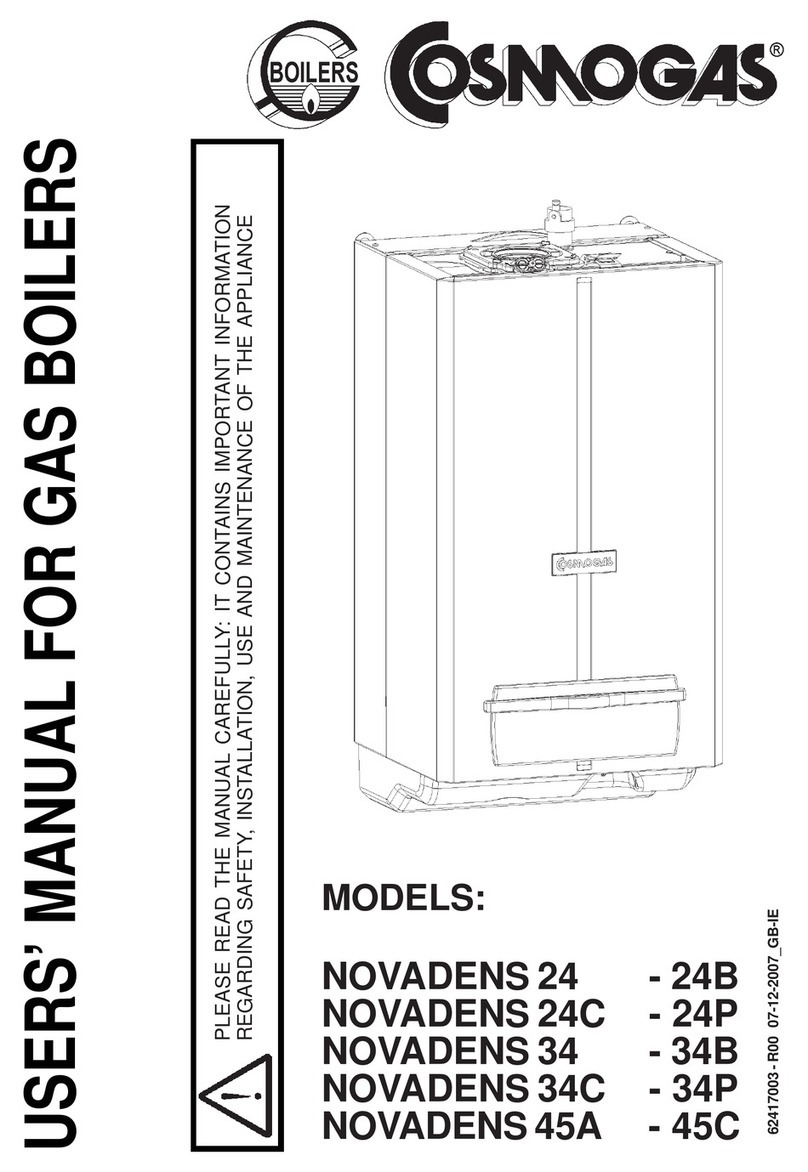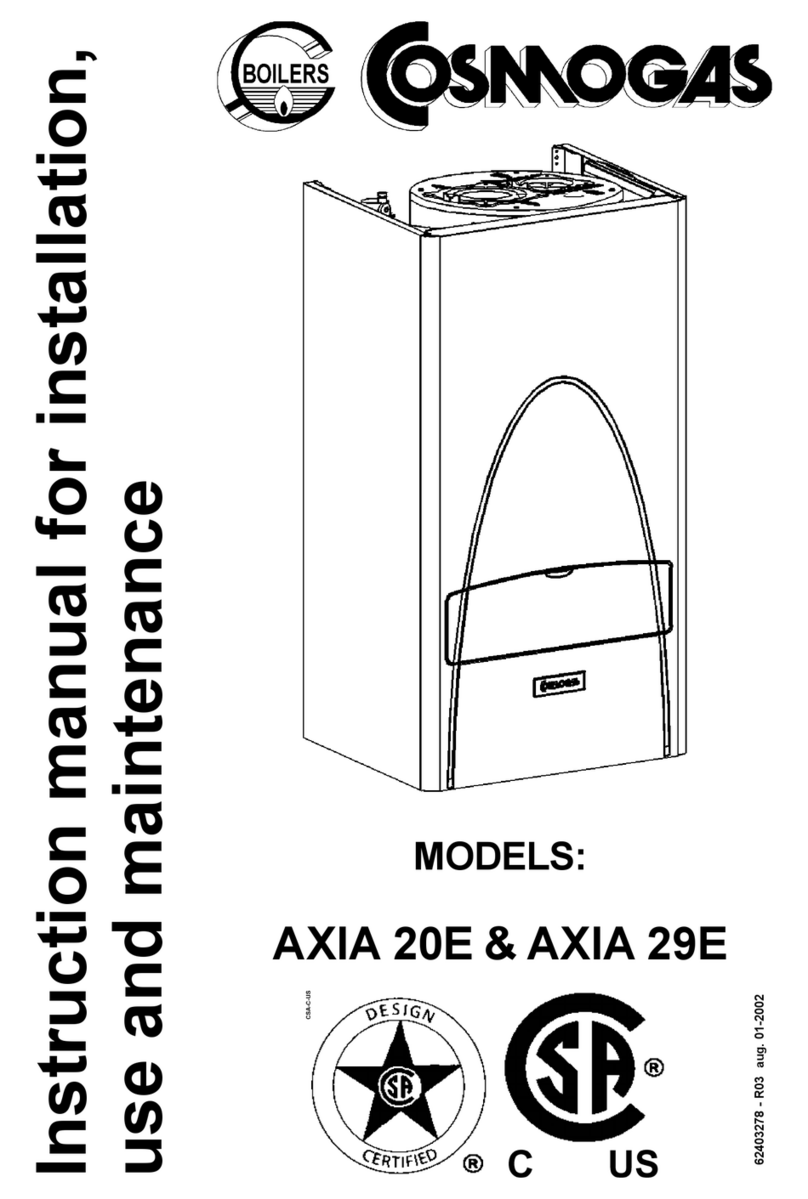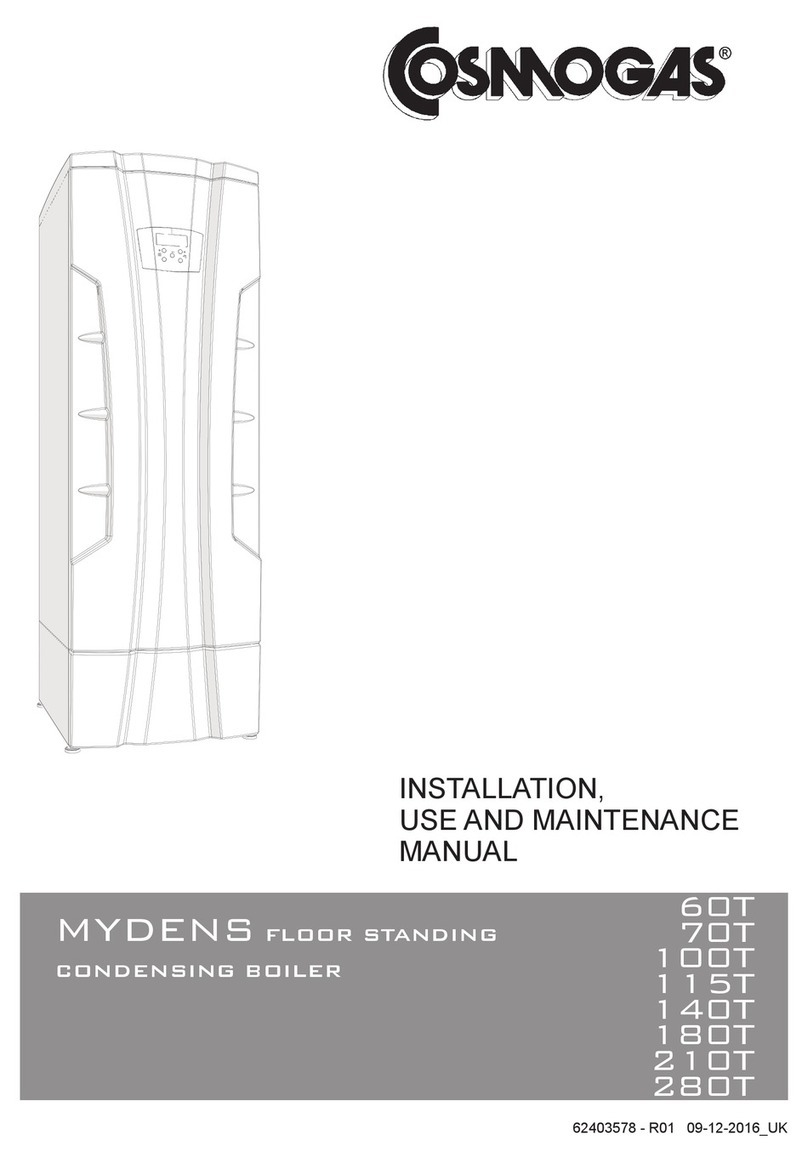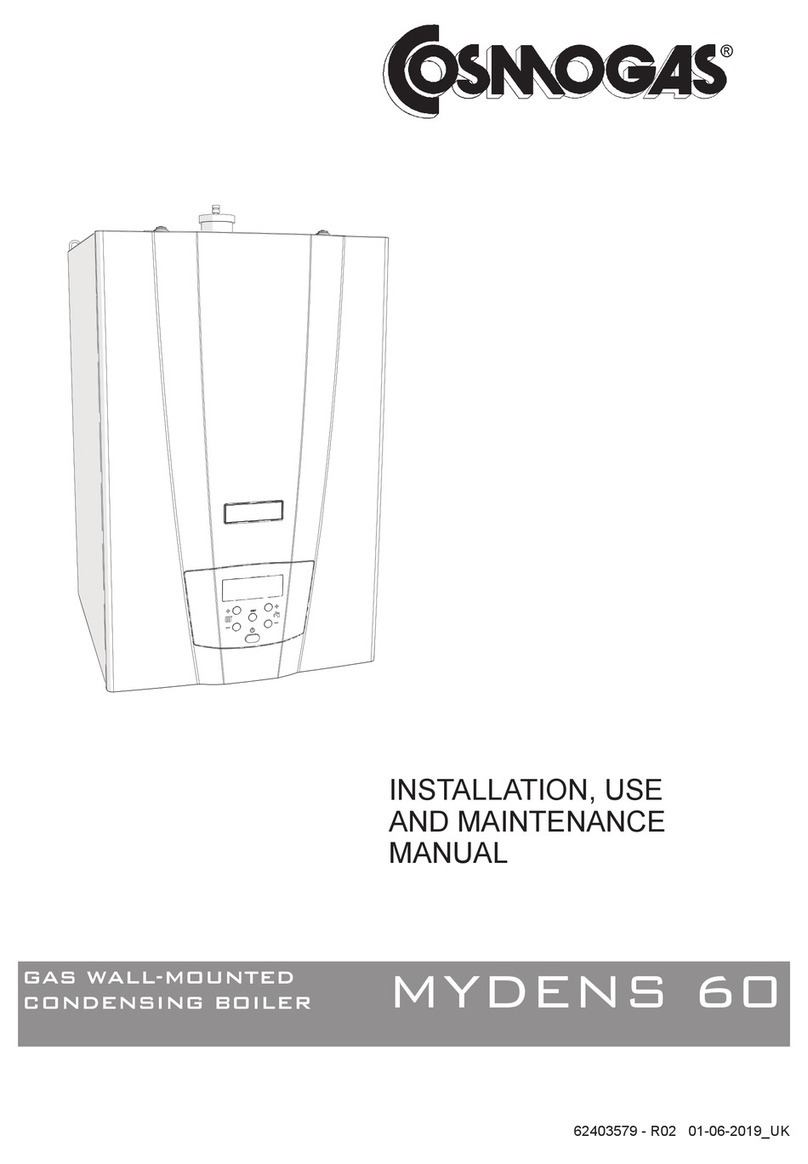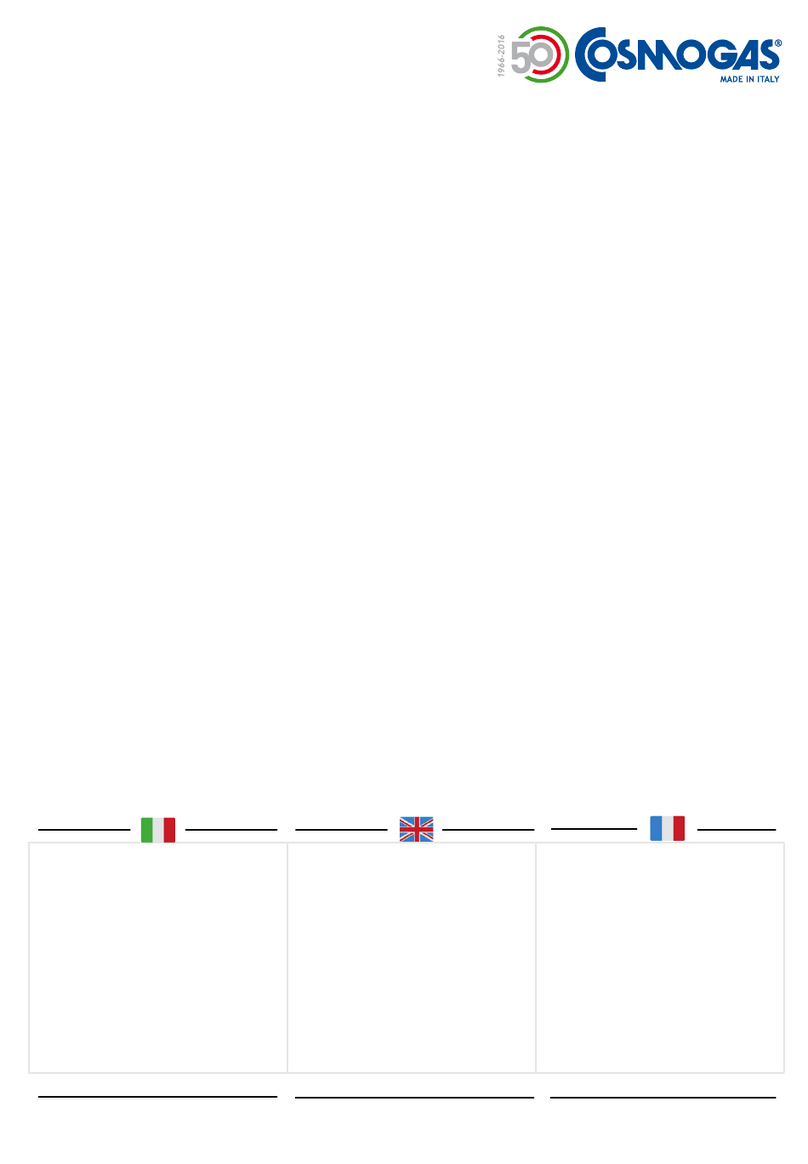10
3.8 - Supply and
Return Piping
Thecentralheatingsupplyandreturn
pipes are marked with different
coloredcaps, (supplyred and return
blue).
Ifthe heateris to be connected toan
existing system it is advisable to
wash out and remove any deposits
from inside the existing pipes, and
install a filter at the lowest point to
trapanyadditional impuritieswhenit
isrunning.
This equipment is designed for use
in a closed loop system.
The pressure of the heating system
sideof theheater must be fitted with
devices (automatic water feed/
pressurereducingvalvenottoexceed
30 psi (2 bar)) adapted to function
automaticallyinordertomaintain the
pressureoftheheatingsideatalevel
belowthatofthepotablewaterleaving
theheat exchanger.
Installation schematics are found in
figures26 to 40.
CAUTION!!! All the
schematics in figures 26 to 40 are
onlysamples.Safetyapparatus,pipe
diameters,andauxiliaryaccessories
must be verified by qualified
personnelandinaccordancewiththe
nationaland/or localcodes.
3.9 - Radiant
Heating
Installation
When the heater is used in
conjuction with radiant heating, it is
imperativethatthetubingcontainsan
oxygen diffusion barrier. If you are
unsurewhetheror not thetubinghas
abarrier, astainlesssteel plate heat
exchanger must be used to protect
the heater from oxygen corrosion
(Seefigure30).Oxygencorrosionwill
also occur if the heater is used in an
open-loop system where new, cold-
fill water is introduced into the
system.Theoxygenwillremoveitself
from solution and react chemically
with the ferrous components (i.e.
steel), causing them to rust and
corrode.THISTYPE OF FAILUREIS
NOT COVERED BY THE
WARRANTY!
3.10 - Installation
of two heaters
To install two heaters in parallel,
followthe diagramin figure 28.
3.11 - Installation
of three or more
heaters
Installing three or more heaters in
parallel.Follow the diagramin figure
29.
3.12 - Multi-zone
system with
several pumps
When creating a multi-zone system
with pump servicing the zone, it is
necessary to isolate the operating
pressure of the water heater circuit
from the pressure of the heating
system circuit. For this purpose,
install a hydraulic disconnector
between the heater and the system
(seefig. 31)
3.13 - Multi-zone
System
When creating a multi-zone system
it is necessary to follow the diagram
shownin figure32.
3.14 - Internal
electrical
connection
settings
Thewaterheatercomes with asetof
electrical terminals for a variety of
system configurations, (inside
junctionbox):
-relaysfor severalpumps; the water
heater is provided with terminals for
connecting a relay that controls
severalpumpsatthesametime (see
figure35)
- plate heat exchanger; the water
heater is provided with terminals for
connecting and controlling a plate
3 - INSTALLATION
heatexchanger forthe production of
domestichotwaterorforaswimming
pool(seefigure 36)
- Indirect water heater; the heater is
providedwithterminalsforconnecting
and controlling an indirect water
heater (see figure 33) This function
canalso be combined with the relay
function for multiple pumps (see
figure34)
-Cold start boiler;inside thejunction
box there are two terminals (see
figure7) markedwith thenumbers 5
and 6, connected together by a
jumper. Simply remove this jumper
toenable the heater to also function
as a cold start boiler.
3.15 - Use of
glycol
Toxicchemicals,such as thoseused
for boiler treatment, shall not be
introduced into the potable water
usedfor spaceheating.
CAUTION!!! If a non-
approved additive is used, it can
cause serious health problems or
possibly death.
If glycol is used with the heater, the
glycol must be recognized as safe
or approved by the United States
FoodandDrugAdministrationforfood
contact as listed in Code of Federal
Regulations, title 21, part 182 of the
Food Additive Regulations. Any
additivesintroduced into theheating
systemmust be recognizedas safe
bythe UnitedStates Food and Drug
Administration.
If glycol is used, it must be used in
compliance with the product
instructions. In any case, such
substances should not be added
directly inside the heater, but only
througharadiator.
3.16 - Domestic
Hot and Cold
water
The domestic hot water flow restrictor
mustbeinstalledonthecoldwaterinlet,
(Refertofigures26,27,30,31and32).
Forservicingpurposes,installashut-
offvalveupstreamfromthecoldwater
inlet.
The heater’s thermostat can be

